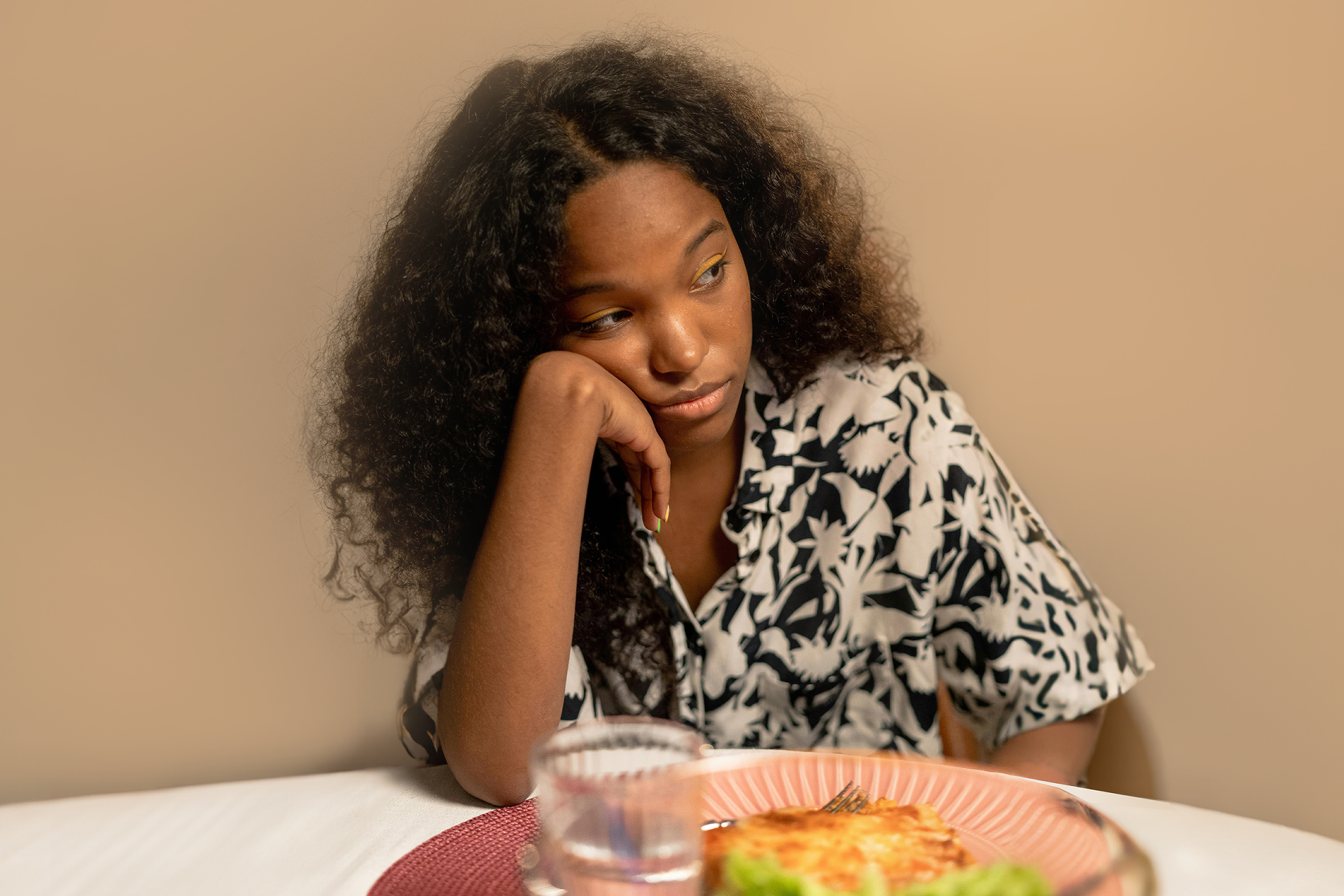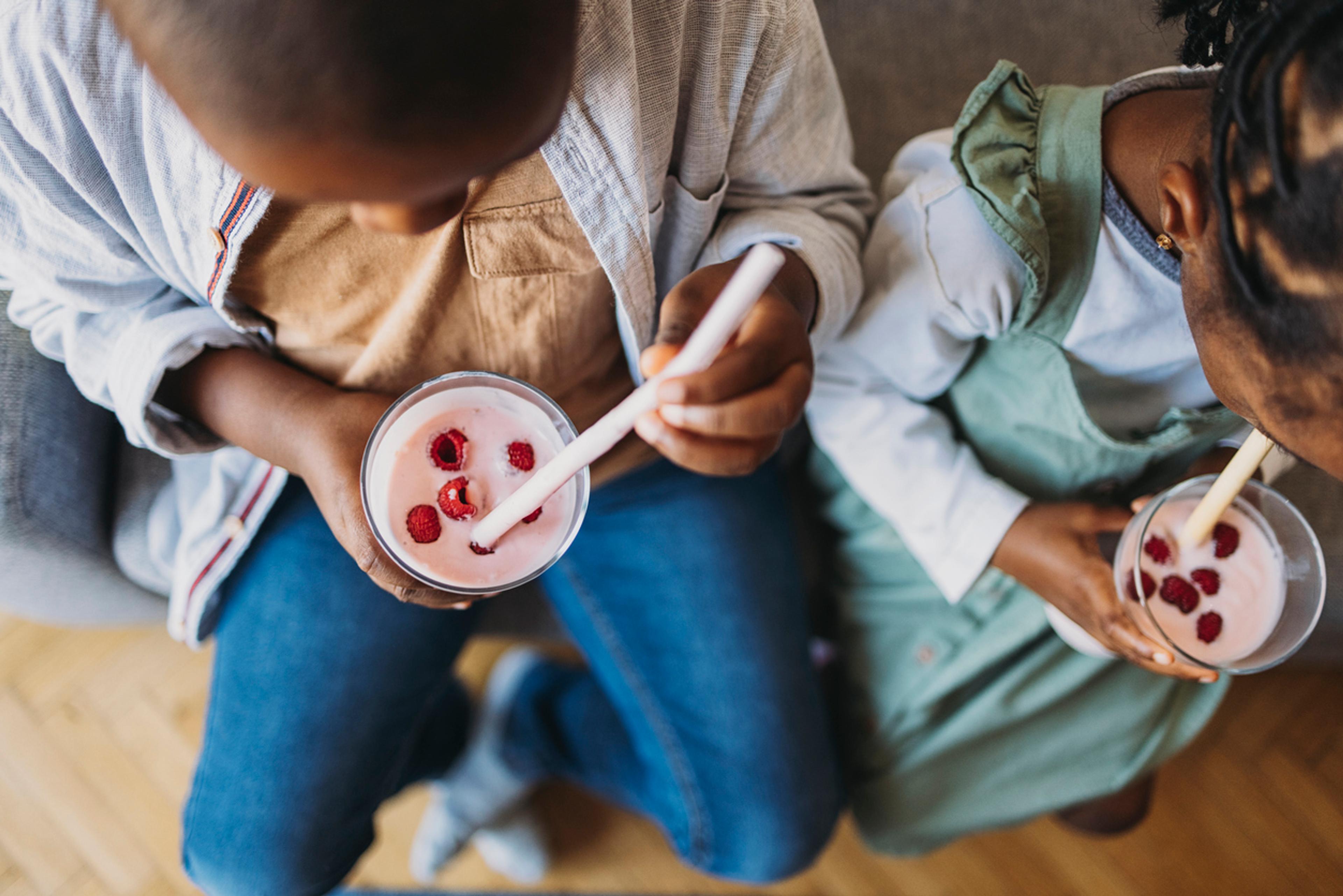

Going out to eat can feel fun, relaxing, and luxurious—a welcome break from the ordinary cooking and cleaning routine at home and a chance to connect with people you love. However, if you’re living with an eating disorder, going to a restaurant can feel like you’re being tortured—in many ways, restaurants are the ultimate threat to the eating disorder brain, since there’s much less ability to control food and its details (e.g. ingredients, preparation, and serving sizes). On top of that, there are the added pressures of having to choose from several options on a menu, eating with other people, and potentially dealing with hard emotions in public.
The good news is, with the right tools and support, it’s possible to reclaim eating out as a joyful part of your life, or your loved one’s life. Today, we’ll explore why eating out can be tough, why it’s necessary to do it, and how to take steps in getting there.
Why eating out can be so hard in recovery
Since the stress of eating out in recovery is multi-faceted, let’s look at some of the most common reasons it can be difficult:
Loss of control
Eating at restaurants means letting go of control of how meals are prepared, as well as their ingredients, calories, and serving sizes, which feels scary when you’re struggling with an eating disorder. “Eating out in eating disorder recovery can be very difficult due to the unknown. A lot of eating disorders thrive on control and eating out takes away that control,” explains dietitian Brianna De la Cruz, MS, RDN. “There are also more 'temptations' and fear foods, which can create an inner battle between what the person wants and what their eating disorder wants.”
Menu overwhelm
For many people, getting to choose exactly what you want to eat is part of the pleasure of going out to a restaurant, but this can be extremely daunting to someone in recovery. Equip Lead Dietitian Shira Feldman, MPH, RD, LD says going out to eat with an eating disorder can cause “feelings of overwhelm with the menu, deciding what to eat, trying to order what you actually want versus what the eating disorder wants you to order, and worrying about what others will think of what you do or don’t eat.” Plus, she adds that this “all might be swirling in your head while those around you seem to easily choose the foods and drinks that sound best to them.”
Then, there’s the major issue of calorie counts on some menus, typically at larger restaurant franchises. As a registered dietitian, I believe calories on menus are unnecessary and unhelpful for everyone—for one thing, it sends the misleading message that calories are the most important nutritional aspect of food—but especially so those in recovery. Research supports this belief, showing that the addition of calories on menus can negatively impact people with eating disorders. One 2025 review of research found that for many people with eating disorders, calories on menus exacerbated behaviors like restriction, and in a study from 2017, participants with anorexia and bulimia consumed a lower number of calories when they were listed while those with binge eating disorder consumed a higher number of calories. Another 2024 study of people with eating disorders also showed mostly negative results from menu labeling, including strained relationships, exclusion of certain restaurants, social isolation, restricted freedom and inner conflict, disembodiment, and anger at diet culture. A small group of participants said they found calories on menus provided safety, comfort, and reassurance.
Eating with others
Going out to a restaurant usually involves eating with other people, and a hallmark symptom of an eating disorder is the fear of eating in front of others. In fact, one 2020 study of central eating disorder fears showed that eating in social situations is one of the participants’ five central fears. Another 2022 study on eating disorder fears showed fear of judgement to be another core concern, particularly in those diagnosed with other specified feeding or eating disorder (OSFED). In my practice, I’ve witnessed several clients being afraid to eat a meal or snack with others because they’re worried what other people will say or think about their food choices, amounts of food, or simply the fact that they’re eating at all.
Dealing with difficult feelings in public
Eating experiences in recovery often come with intense and difficult emotions, which can be hard enough to manage when you’re at home or in a familiar and safe space. Facing such big feelings in public at a restaurant can feel daunting and unsafe, especially if you’re early in the process and haven’t had much practice yet. “While eating out for someone without an eating disorder brings up emotions, they are typically ones of excitement for eating a favorite food, trying a new place, or even because they don’t have to cook or do the dishes that night,” Feldman comments. “For someone working through eating disorder recovery, there are a lot of emotions as well, but usually ones of stress and anxiety.”
Why it’s important to practice going to restaurants during treatment
Eating disorder treatment can seem hard enough without adding the extra challenge of going out to eat. But the truth is that on the path to full recovery, it’s important to leave no stone unturned so you can enjoy the freedom of life without an eating disorder—and this includes going out to eat (and enjoying it). If the eating disorder prevents you from engaging in normal life experiences like going to restaurants sometimes, that means you’re still in its grips, even if you’re eating enough food at home.
“The more one listens to their eating disorder, the more power it is being given. It’s important to challenge fear foods and challenge the unknown, because the more we hide from the fears, the more they control us.” De la Cruz says. “It can be helpful to have a food and not know all the ingredients, calories, or macros in that food, and then see later that everything is okay.” In treatment, exposure therapy is an important part of the process towards freedom, so you can look at eating in restaurants as just that: exposure to something that feels scary so that you’re one day able to participate in eating experiences in restaurants with full freedom. With the guidance and support of your dietitian and therapist, you can take steps towards eating out at a pace that feels relatively manageable to you.
Going out to eat can also eventually be a way of reconnecting with yourself outside of your eating disorder, especially if it used to be something you enjoyed. “For many people, eating out was a regular part of their lives before the eating disorder, and something that many people want to feel comfortable with again,” says Feldman. She adds that it can also be a helpful way of connecting with other people, which is important because eating disorders thrive in isolation. “Having a level of comfort with eating out at restaurants or in social situations can provide opportunities for social connection, and a way to see food in a more enjoyable light,” she says.
As someone who lives in full recovery and used to dread going out to eat with my eating disorder, it’s now one of my favorite activities—few things bring me more joy than sharing a delicious meal out at a favorite restaurant with my husband, mom, or friend. Plus, exploring new cuisines while traveling in eating disorder recovery or even locally helps me learn about different cultures and places on a global level.
Tips to manage going out to eat
If you are on the road to recovery and want to begin incorporating restaurant meals, it’s important to do so with the support of a team. Ideally, you’ll work with a registered dietitian and therapist to formulate a plan tailored to your specific needs, but here are some general tips to support your process:
Break it into steps (maybe baby steps)
If going out to eat feels unrealistic and too overwhelming right now, know that there are several steps you can take in that direction, without even setting foot in a restaurant. For example, you might practice exploring and choosing meals from menus online to help you become more comfortable with reading menus and making food decisions aligned with recovery. Other steps can include formulating a cope-ahead plan with your team or a loved one, naming a few restaurants you’d like to try in the future (it could be one you liked before the eating disorder or something brand-new), practicing ordering, and visualizing yourself eating a meal out. If you’re ready to go to a restaurant, perhaps you start by ordering a meal that feels relatively safe, with the intention of eventually ordering the meal you truly want, even if it feels like the scariest option.
Join a restaurant meal group or simply eat with others
Eating out with others in recovery can create a feeling of common humanity and community, so check to see if any eating disorder dietitians or therapists offer restaurant group trips in your area. If you’re not quite ready for an outing and feel uncomfortable eating in front of others, start with gathering a small group of loved ones to share a meal. This can help you get used to eating in front of more people, which can make restaurants feel more approachable.
Practice letting your healthy brain make decisions
When you look at a restaurant menu during the recovery process, it’s common to experience a mental battle between your eating disorder brain and your healthy brain. To prepare for this, work on learning the difference between your eating disorder brain’s preferences and your authentic preferences. Then, practice choosing food options at home that you want to eat (not your eating disorder), to get your brain more used to it. This might take some work and be difficult at first, but by paying attention and being mindful of the “why” behind your food choices, you’ll eventually tease out what you truly want to eat.
Use the mealtime strategies you usually find helpful
Keep in mind your typical mealtime strategies can be used in restaurant settings, too. Some of my favorite ones include breathing exercises (at the table or in the bathroom), sense-engagement practices (like focusing on smells), and keeping conversations lighthearted (and off food). Feldman also recommends dressing comfortably and bringing objects that evoke a sense of grounding or distraction, like a fidget toy, affirmation card, or a seashell from a beach trip.
Learn to deal with calories on menus
If you’re (understandably) not ready to face calories on menus, Feldman suggests eating somewhere at local restaurants rather than chain restaurants, as you’re less likely to encounter unwanted nutritional information this way. When you know calorie counts will be present, try looking at the menu beforehand with your dietitian and picking an option or two that feels doable, then have a loved one hold you accountable to choosing it when you’re out. Alternatively, De la Cruz recommends a family member read aloud menu options once you’re seated at the table. Eventually, you can work towards ordering what you truly want from menus with calories listed, but give yourself time and patience to arrive there.
Go with safe, supportive people and communicate
Eating at restaurants can feel scary, but doing so with safe people can make a huge difference and help create a feeling of safety that’ll support you through the meal. Feldman recommends “talking ahead of time with your support people about what you might need from them, and letting them know if you want them to pick something you used to eat or if you need to talk through your menu choices ahead of time to help determine if your eating disorder voice is playing a part in the order.” You can also choose a “safe word” together to use if you need help in the moment or for them to join you in a short break from the table. “For some, it’s even helpful to talk about what they might need to look for in your behavior if you’re having a hard time,” Feldman adds.
How loved ones can support someone in recovery at restaurants
Exactly how loved ones can help someone with an eating disorder handle restaurant meals depends on where you are in the recovery process. Feldman suggests loved ones ask the person in recovery what they need and let them know they’re available for support and preparation beforehand, too. “Don’t assume what might be stressful or overwhelming and don’t assume that something will be easy,” she encourages. “Sometimes your loved one might need a pep talk and for you to be the biggest cheerleader possible, and other times they might just need some space to work through emotions and would love a welcoming space to cry.”
Supporting someone in recovery at restaurants can often look somewhat like supporting them during meals at home, which includes:
- Avoiding commenting on anyone’s food or how much anyone ate.
- Focusing on lighthearted table topics to provide healthy distraction.
- Be sure not to talk about diets, weight, or bodies to avoid triggering the eating disorder.
- Offering to take breaks from the meal for a five-minute breather if necessary.
- Holding non-judgmental space before and after meals for feelings to be shared, and co-regulation and emotional safety to occur.
- Learning which tools and skills your loved one may want to use at the table (like mindfulness practices) so that you can remind them what they are, if forgotten in the heat of the moment.
In terms of restaurant-specific meal support, things like reading menu options aloud, talking through food choices before going to the restaurant, or making sure you’re seated at a table that doesn’t feel too stressful (i.e., not in a very busy or noisy part of the restaurant) can be helpful.
However, there’s not necessarily always something for support people to do when it comes to restaurant meals—but simply showing up can make all the difference. As Feldman says, “Oftentimes, just letting your loved one know they aren’t alone in this step can be incredibly supportive and give the boost of confidence they need.”
- Escoffier Team. (2024, September 25). 2024 Consumer Dining Trends: How Americans Are Spending on Restaurants and Takeout. Escoffier; Auguste Escoffier School of Culinary Arts. https://www.escoffier.edu/blog/world-food-drink/consumer-dining-trend-statistics/
- Malhi, H., Fletcher, J., & Balhatchet, D. (2025). The Impact of Restaurant Menu Calorie Information on People with Eating Disorders: A Scoping Review. Dietetics, 4(1), 4. https://doi.org/10.3390/dietetics4010004
- Haynos, A. F., & Roberto, C. A. (2017). The effects of restaurant menu calorie labeling on hypothetical meal choices of females with disordered eating. The International Journal of Eating Disorders, 50(3), 275–283. https://doi.org/10.1002/eat.22675
- Beetham, T., Kel O'Neill, & Newman, K. F. (2023). “An extra fight I didn’t ask for”: A qualitative survey exploring the impact of calories on menus for people with experience of eating disorders. British Journal of Health Psychology, 29(1). https://doi.org/10.1111/bjhp.12685
- Levinson, C. A., & Williams, B. M. (2020). Eating disorder fear networks: Identification of central eating disorder fears. International Journal of Eating Disorders, 53(12). https://doi.org/10.1002/eat.23382
- Brown, M. L., & Levinson, C. A. (2022). Core eating disorder fears: Prevalence and differences in eating disorder fears across eating disorder diagnoses. International Journal of Eating Disorders, 55(7). https://doi.org/10.1002/eat.23728
- Cleveland Clinic. (2023, June 9). Exposure Therapy. Cleveland Clinic. https://my.clevelandclinic.org/health/treatments/25067-exposure-therapy
- ndic_support. (2018, April 13). The Challenge of Going to a Restaurant While in Eating Disorder Recovery - National Eating Disorders Association. National Eating Disorders Association. https://www.nationaleatingdisorders.org/challenge-of-going-to-restaurant-eating-disorder-recovery/







